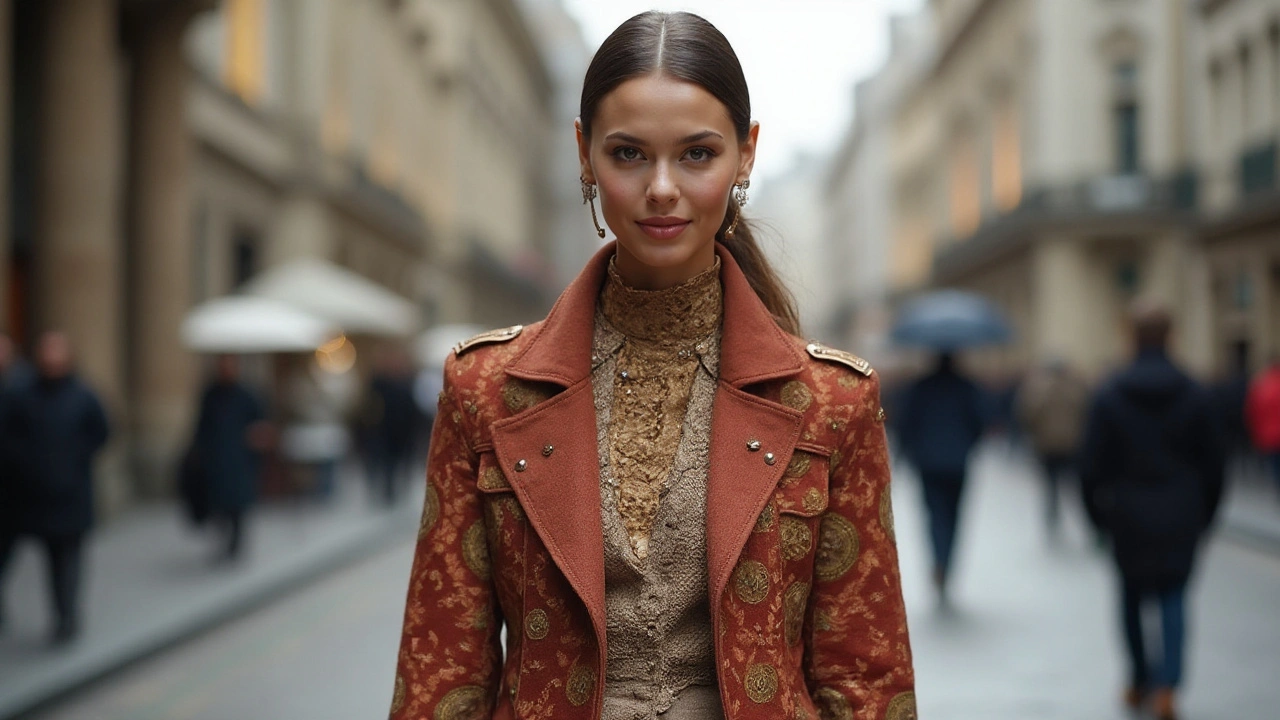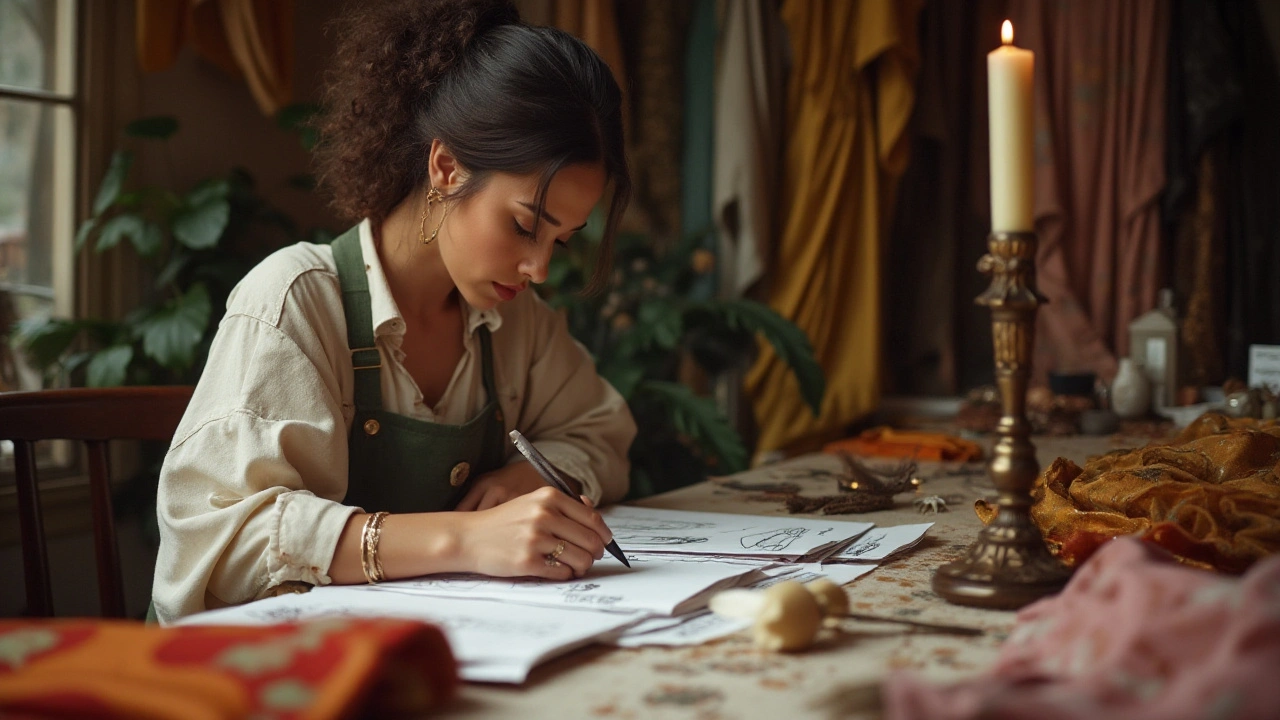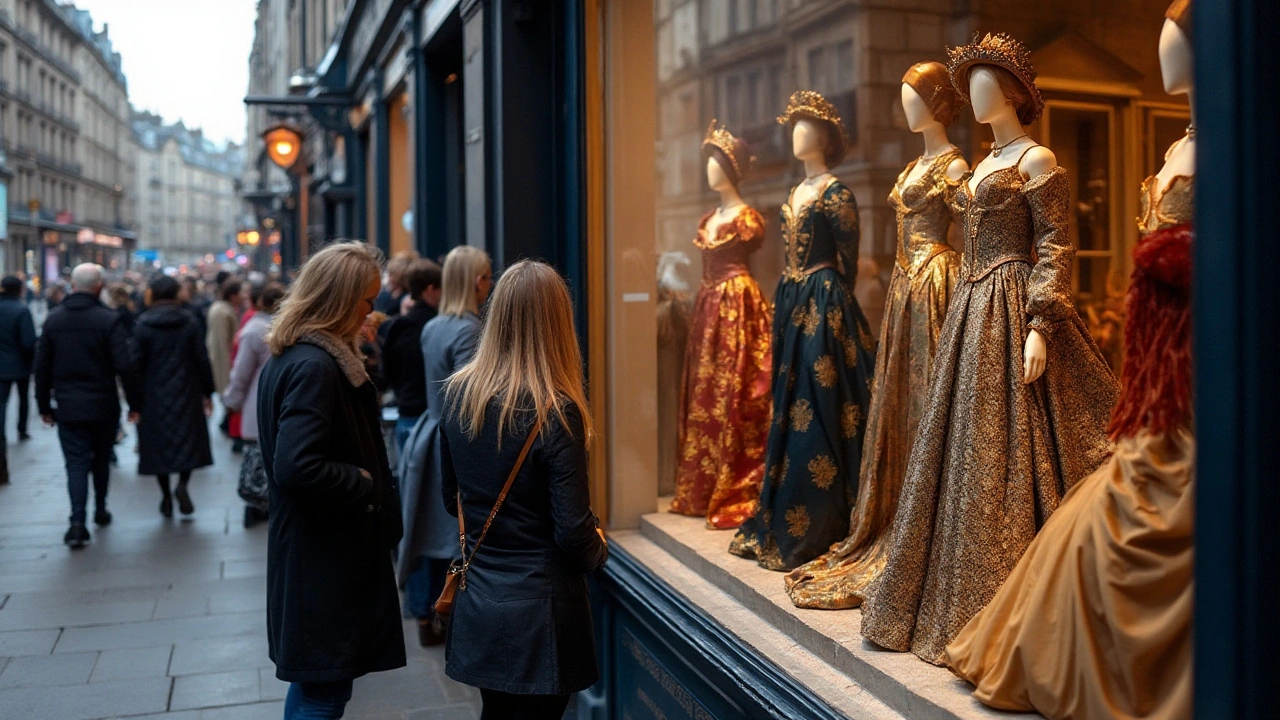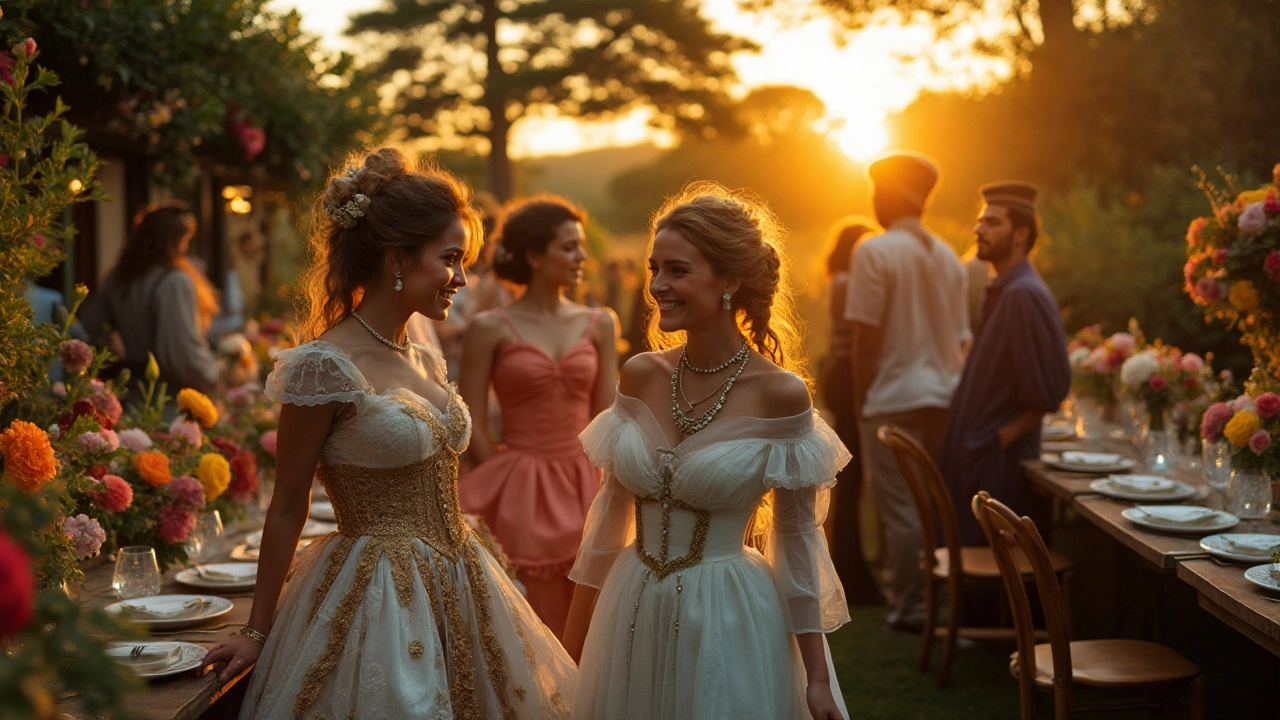Renaissance Fashion Inspirations in Modern Style
 Nov, 18 2024
Nov, 18 2024
The Renaissance era was a time of great cultural rejuvenation, a period where art, science, and thinking flourished, leaving an indelible mark across centuries. This profound wave of innovation did not only touch upon intellectual realms but significantly altered the world of fashion too. Modern designers are captivated by the era’s intricate patterns, lavish fabrics, and innovative tailoring techniques that once defined Renaissance style.
From the bold, structured silhouettes to the luxurious use of textiles like velvet and brocade, elements of Renaissance fashion occasionally surprise and charm the catwalks even today. The era's love for opulence and detail is apparent in how designers draw on its aesthetic to craft pieces that bring a majestic flair into the 21st century. Whether it’s a dramatic ruffled collar or the artistry of embroidered gowns, the echoes of a bygone age remain ever-present and celebrated in modern wardrobes.
- Renaissance Revival in Modern Fashion
- Key Elements and Patterns
- Modern Designers Inspired by Renaissance
- Incorporating Renaissance into Everyday Style
Renaissance Revival in Modern Fashion
The fascination with **Renaissance fashion** is a testament to how past styles continue to inform and invigorate the world of contemporary clothing. As we stand at the intersection of history and modernity, the allure of Renaissance aesthetics is remarkably strong among today’s fashion designers. It was a period marked by extravagant attire that conveyed status and artful expression, characteristics that fashion houses eagerly channel in their collections. Unlike any other epoch, the Renaissance bolstered bold experimentation with color and form, elements that resonate with current designers seeking to create impactful statements on the runway.
One crucial aspect of the Renaissance era was its love for layering and ornamentation. Dresses were often adorned with ornate embroiders, pearls, and gold thread, creating a rich tapestry of style that is echoed in today’s luxury fashion segments. This penchant for grandeur has inspired modern collections seen in major fashion capitals like Milan and Paris, where designers often reimagine opulent gowns with a 21st-century twist. Using voluminous skirts, tightly corseted bodices, and velvet fabrics, these modern pieces revive the Renaissance while infusing novelty suitable for contemporary tastes. The longevity of the influence lies in its versatility — adapting essentials like puffed sleeves and intricate headpieces with a modern minimalist edge.
The influence of the Renaissance extends beyond outer garments, permeating the world of accessories. Striking neckpieces and delicate lace gloves grace collections, harking back to when fashion was a literal canvas of creativity. It is interesting to note that historically significant elements like the doublet and surcoat have evolved into what we perceive as sophisticated blazers and tailored coats today. According to the renowned fashion historian Valerie Steele, "The Renaissance was a remarkable era for textiles and the introduction of new fabrics from the East, which forever changed Western fashion's future." She asserts that their lasting appreciation of quality and craftsmanship continues to mirror in today’s design philosophies. While fast fashion caters to the masses, high-end ateliers deliver timeless pieces that mirror Renaissance opulence.
Designers like Alexander McQueen and Dolce & Gabbana frequently delve into archives of Renaissance artwork and clothing, drawing inspiration from the era's dramatic flair and artistry. By revisiting this spectacular period, they lend an engaging narrative to the ensembles they create. These inspirations are not simply a homage but a testament to the enduring appeal and relevance of these historical styles. Today’s fashion innovations, with digital tailoring and sustainable textiles, embrace the Renaissance spirit of daring experimentation and cultural enrichment. This seamless blending of old and new invites us to appreciate the enduring splendor of the **Renaissance fashion** and its undeniable impact on modern wardrobe aesthetics.

Key Elements and Patterns
The Renaissance era introduced an explosion of fashion creativity that continues to inspire and inform modern clothing design. One of the most defining features of Renaissance fashion was the elaborate use of luxurious fabrics, such as velvet and brocade, which added a rich texture and opulence to garments. These fabrics were often adorned with intricate embroidery and were a status symbol reflecting wealth and nobility. It's incredible how such trends have permeated the boundaries of time, making their way into haute couture and even some high-street collections today.
The favored silhouettes of the time included structured, padded garments designed to accentuate the body’s natural shape while creating an ideal form. Doublets, gowns, and hose were heavy with padding, a technique modern designers have reinvented using contemporary materials to create striking shapes and volumes. A fascinating detail is how these forms were enriched by slashings and puffings, allowing glimpses of contrasting fabrics underneath, a technique now often employed for dramatic flair in modern collections. This distinctive style set the groundwork for what we now see in the tailored jackets and puffed sleeves that add drama and elegance to evening wear.
The era's love for decoration was unparalleled, often characterized by intricate patterns inspired by the natural world. Florals, vine motifs, and geometric designs were meticulously woven or embroidered, echoing the Renaissance's fascination with the complexity of nature and mathematics. Modern fashion has seen a resurgence in these patterns, notably through digital prints and laser-cut designs that pay homage to their intricate predecessors. Contemporary designers often embrace this rich tapestry of ideas, creating textiles that retain the essence of these motifs. According to fashion historian Sarah Bendall, "The Renaissance was a time of great sartorial experimentation, where art and clothing were not separate spheres but fed into each other."
Celebrated Patterns and Embroideries
The patterns from the Renaissance also bore a heavy influence from cultural exchanges. As trade routes expanded, textiles began to feature exotic influences, drawing inspiration from Asia and the Middle East. This cross-pollination of ideas is evident in today's fashion industry, which thrives on diverse inspiration and fusion of global designs. An enriching addition has been the continued use of tapestry-like embroidery, which many contemporary designers utilize to add layers of storytelling to their work.Once laboriously hand-stitched, these designs are now replicated using advanced machinery that allows rapid production while preserving the detail and artistry of traditional methods. This approach underlines how the fusion of ancient techniques with modern technology can result in beautiful coexistence. For those keen to embrace this fashion trend, seeking garments that feature intricate embroidery or heritage patterns can add timeless style to a contemporary wardrobe. Interestingly, a survey of fashion designers in Europe indicated that about 60% have, at some point, drawn direct inspiration from Renaissance embroidery techniques for their collections, underscoring the era's enduring impact on the industry.
A tip for modern enthusiasts wishing to incorporate these elements into everyday wear is to select pieces that play with scale and layering. This can be done by choosing accessories or clothing that references Renaissance patterns subtly through smaller motifs or in accent pieces like scarfs or bags. This approach allows for personal style expression without being overwhelming, providing a nod to history within a modern aesthetic.

Modern Designers Inspired by Renaissance
The tapestry of modern fashion owes much to the spirited elegance of the Renaissance, a period still revered by designers worldwide for its audacious creativity and cultural significance. This historical zeitgeist is lovingly revived in the collections of many contemporary designers who pull from its vibrant heritage. The likes of Dolce & Gabbana and Alexander McQueen, for example, have frequently channeled the Renaissance through their exquisite use of rich, embellished fabrics and intricate detailing. Dolce & Gabbana often takes inspiration from the Renaissance's love affair with ornateness, infusing their designs with similar luxury and drama. Through their collections, they transport fashion enthusiasts back to the grand ballrooms and decadent feasts of a long-gone era.
On the other hand, Alexander McQueen, often hailed as a visionary, captivated the fashion realm with his daring, dramatic creations. He seamlessly incorporated Renaissance themes such as religious iconography and historic silhouettes into his work, making his pieces both theatrical and thought-provoking. In a runway show reminiscent of the Renaissance's auditory tapestry of musical and visual art, McQueen intertwined modernity with classic elements, evoking a haunting yet beautiful nostalgia. Gucci, too, often recalls Renaissance influences, seen vividly in their use of embroidery, flowing silhouettes, and ornate patterns that conjure memories of royal courts and historic sartorial practices.
These designers illustrate how the DNA of Renaissance fashion continues to replenish contemporary styles. This lineage persists as a silent dialogue between the past and the present, fostering innovation while maintaining reverence for historic artistry. The fascination with Renaissance details is more than a passing trend; it represents a celebration of a time when clothing was not only a craft but an art form. As one fashion historian once noted,
"The Renaissance was a renaissance of ideas in fabric, shaping identity and status in their folds."It is this profound appreciation for the epoch’s aesthetic that enables designers today to craft attire that pays homage to tradition while pushing the boundaries of modern sophistication.

Incorporating Renaissance into Everyday Style
Integrating the opulent charm of Renaissance fashion into everyday attire doesn’t require a complete wardrobe overhaul. Instead, it’s about introducing elements that nod to the past while fitting seamlessly into the modern aesthetic. Today, fashion enthusiasts can mix beautifully tailored capsule pieces with period-inspired details to create looks that evoke a touch of history without being costume-like. Start with texture: fabrics like velvet and brocade, known for their rich quality, are staple materials from the era. Adding a velvet blazer or a brocade skirt can immediately uplift your ensemble with a royal touch. Pairing these textured garments with contemporary cuts and lines balances the look, ensuring it remains wearable and chic.
Patterns are another avenue through which Renaissance influence can shine in modern fashion. Florals, an enduring motif, were prevalent during this revolutionary time and continue to find favor on today's runways. A floral print blouse or dress offers a nod to history while celebrating the beauty of nature—a theme Renaissance artists appreciated. For those daring enough, a piece featuring intricate embroideries can act as a canvas that drapes the body, serving as both garment and art.
Attention to detail was paramount during the Renaissance, and it can be similarly important in modern attire. Accessories like a statement ruffle collar or embellished jewelry can transform a simple outfit. Add a touch of lace to cuffs or hems to evoke the fine detailing once seen in the attire of nobility. Emphasizing a single historical feature keeps the ensemble grounded while allowing one to play with various combinations.
Layering, a technique prevalent in Renaissance dressing, also finds its place in current fashion trends. Combining a high-neck blouse under a slip dress, or jacket over an intricate lace top, offers dimensions to an otherwise flat look. This enables a stylistic dialogue between the stark elegance of modern garments and the lush depth of historical attire.
If modern-day designers like Dolce & Gabbana and Vivienne Westwood have taught us anything, it's that taking inspiration from different ages brings timelessness and depth to modern collections. A vestige of this period’s glamour can be seen in their elaborate embellishments and bold silhouettes. As Westwood famously noted, “Fashion is about eventually becoming naked,” implying that fashion should undress to its core influences, one of which is evidently the enduring charm of Renaissance elegance.
Adopting this style not only allows a flirtation with history but also grants a deeper appreciation of fashion’s cyclical nature. Whether through a subtle tapestry of textures, the gleam of gilded accessories, or a dramatic splash of pattern, incorporating Renaissance influences offers an allure that transports our wardrobes through time.